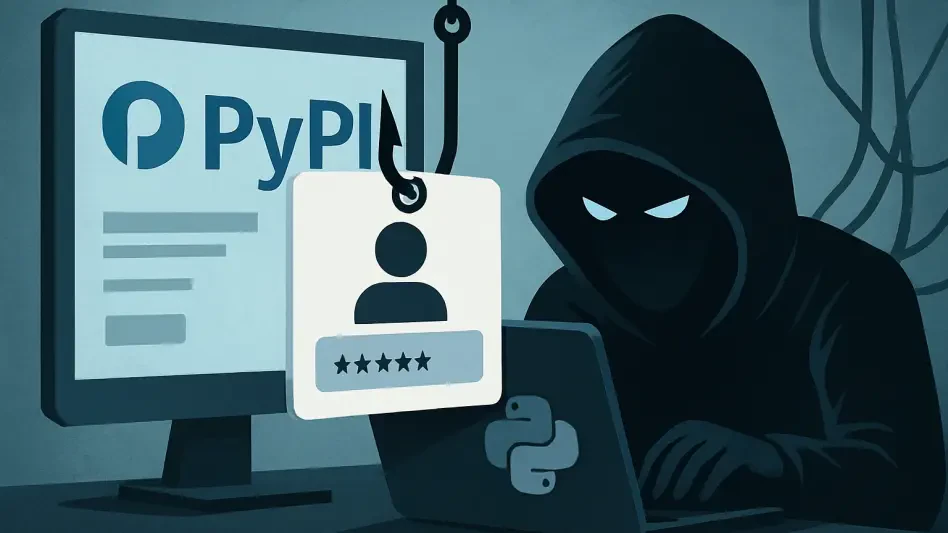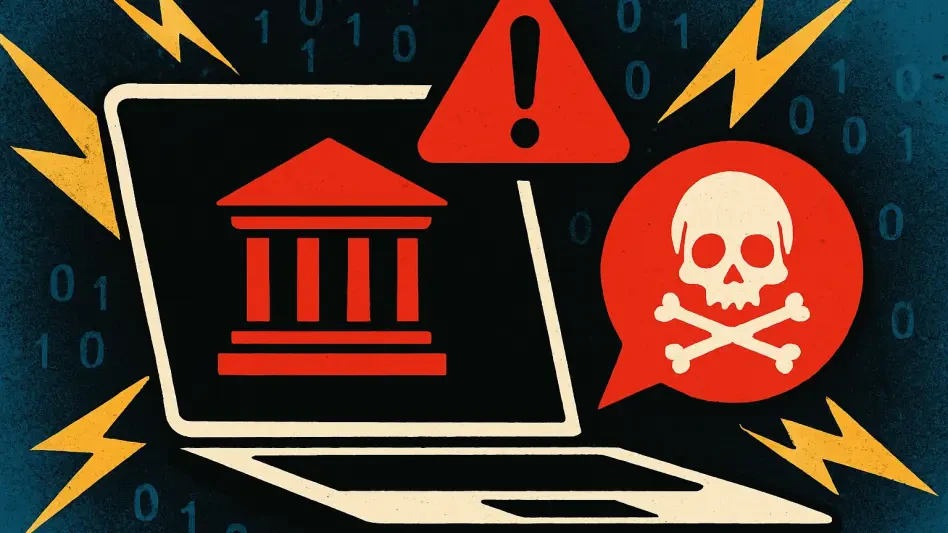What happens when a seemingly harmless email turns into a gateway for chaos in the Python development world? A chilling new phishing scam targeting users of the Python Package Index (PyPI) has surfaced, employing meticulously crafted messages to steal credentials and threaten the integrity of countless projects. This isn’t just another cyber annoyance—it’s a calculated attack that could ripple through the entire tech ecosystem. Developers are now on high alert as this deceptive threat looms large, demanding urgent attention and action.
The Stakes Couldn’t Be Higher for Python Developers
At the heart of this issue lies the critical role of PyPI, the central repository hosting millions of Python packages that power everything from small scripts to enterprise-level systems. When a phishing campaign zeros in on this vital hub, the potential fallout is staggering. A single compromised account could allow attackers to inject malicious code into widely used packages, endangering not just individual developers but entire organizations and critical infrastructure worldwide.
This threat transcends personal risk, posing a systemic challenge to the open-source community. With Python’s pervasive use in data science, machine learning, and web development, any breach in PyPI’s security could have cascading effects across industries. Understanding the gravity of this scam is essential for every developer who relies on this platform, as the consequences of inaction could be catastrophic.
Dissecting a Cunning Deception in the Inbox
This phishing campaign operates with alarming sophistication, sending emails that mirror official PyPI communications down to the smallest detail. These messages often claim that urgent “maintenance and security procedures” require users to verify their account details, with threats of suspension for non-compliance. Unsuspecting recipients are then directed to fraudulent sites like pypi-mirror.org, meticulously designed to capture login credentials.
The danger doesn’t stop at stolen passwords. Once attackers gain access, they can upload malware-laden packages or tamper with existing ones, turning trusted tools into ticking time bombs. A parallel incident reported earlier using the domain pypj.org highlights the persistent nature of these attacks, with cybercriminals continuously adapting their tactics. No developer, from solo coders to those in large enterprises, is immune if they interact with PyPI.
Experts Sound the Alarm on Evolving Cyber Threats
Insights from industry leaders underscore the relentless adaptability of these phishing schemes. Seth Larson, a developer at the Python Software Foundation (PSF), urges immediate action for anyone who may have entered credentials on a suspicious site: reset PyPI passwords and scrutinize account security history for anomalies. He also emphasizes the importance of reporting dubious emails to [email protected] to help curb the spread of these threats.
Shane Barney, Chief Information Security Officer at Keeper Security, points to the ever-shifting strategies of attackers who register new deceptive domains with alarming frequency. “While stopping all phishing attempts is nearly impossible, robust defenses can make a difference,” Barney notes. He advocates for hardware-based keys like YubiKeys and password managers that only auto-fill on trusted sites, alongside enterprise solutions like privileged access management to limit damage from breaches. These expert perspectives highlight a critical truth: proactive, multi-layered security is no longer optional.
Behind the Scenes: PyPI’s Fight Against Phishing
PyPI maintainers are not standing idly by as this threat unfolds. Collaborative efforts with domain registrars and content delivery networks are underway to shut down malicious sites swiftly. Additionally, these fraudulent domains are being submitted to browser blocklists to prevent unsuspecting users from accessing them, while partnerships with other open-source platforms aim to streamline response times.
Beyond immediate containment, long-term strategies are also in motion. Enhancements to two-factor authentication (2FA) are being explored to render phishing attempts less effective, even if credentials are compromised. These measures, though not foolproof, demonstrate a commitment to safeguarding the Python ecosystem, with ongoing initiatives set to evolve through at least 2025 to 2027 to counter emerging tactics by cybercriminals.
Equipping Developers with Tools to Stay Safe
Protection begins with practical, actionable steps tailored to this specific danger. Developers must avoid clicking links in unsolicited emails, instead navigating directly to PyPI via a trusted bookmark or manually typed URL. Scrutinizing domains before entering credentials is crucial—legitimate communications will never redirect to unfamiliar sites like pypi-mirror.org. Adopting phishing-resistant 2FA, such as hardware keys, adds an indispensable layer of defense.
Community vigilance plays a pivotal role as well. Reporting suspicious emails to [email protected] and sharing warnings within developer networks can prevent others from falling victim. Utilizing password managers to block credential entry on fake sites further fortifies personal security. These combined efforts, alongside PyPI’s ongoing work to neutralize malicious domains, offer a fighting chance against this insidious scam while fostering a culture of shared responsibility.
Reflecting on a Battle Fought and Lessons Learned
Looking back, the emergence of this sophisticated phishing campaign targeting PyPI users revealed vulnerabilities that struck at the core of the Python community. The potential for widespread damage through stolen credentials and tampered packages exposed gaps in both individual and systemic defenses. Yet, the response from maintainers, experts, and developers alike showcased a resilience that defined the fight against this threat.
The path forward crystallized around stronger authentication methods, heightened user caution, and enterprise-grade security protocols. A renewed focus on community collaboration emerged as a cornerstone, with shared warnings and reported threats becoming vital tools in outpacing attackers. As the landscape of cyber threats continues to shift, the enduring lesson was clear: safeguarding the Python ecosystem demands not just technology, but a collective commitment to stay one step ahead.








